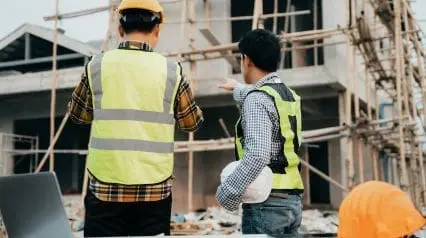What is Hazard Identification and Risk Assessment?
Hazard identification and risk assessment (HIRA) are two processes necessary for maintaining a high level of safety and efficiency in the workplace. These processes aim to identify potential risks and hazards, assess their severity, and put management teams in a better position to put controls and preventive and corrective actions.
During hazard identification, teams inspect workspace and processes with the goal of identifying potential risks to human health and safety. The types of hazards teams may identify vary from organization to organization, but it’s crucial to ensure that the team detects any and all potential threats to your worker’s safety.
On the flip side, a risk assessment is the next step after hazard identification. This is the process of assessing the risks and hazards found during the identification process and determining their severity, likelihood, and other factors. That way, the team can create a comprehensive and effective plan to protect workers and create a better work environment.
Importance
Safety is a top priority when managing a workplace. Regardless of whether the company is in the automotive, production, retail, or construction industry, maintaining a certain level of safety to protect your workers is critical. This is why companies must conduct proper hazard identification and risk identification processes, as this will serve as their baseline and foundation for implementing controls, policies, and best practices to protect workers throughout operations.
Safety issues can cause significant harm to an organization. Not only will the organization be liable for damages, but a lack of proper risk assessments may put workers in unnecessary danger, harming their health. So, before creating a safety platform and list of best practices for your organization, make sure that you have performed a comprehensive hazard identification with a risk assessment to build a foundation for safety policies.
Methods
Organizations have the freedom to conduct hazard identifications and risk assessments however they deem fit based on the company’s needs and requirements. Some of the methods and approaches companies commonly use for these processes include:
Inspections
This process includes regular workstations, practices, and equipment inspections to uncover potential hazards. Engaging employees in these inspections can provide valuable insights as they are often the ones working in close proximity to the hazards.
Hazard Analysis
This process breaks down each job into specific tasks and identifies potential hazards associated with each task. This method ensures that hazards related to specific job duties are thoroughly examined.
Incident Investigation
Conducting incident investigations, even for near misses, is crucial for organizations. This is because analyzing incidents helps organizations take proactive measures to prevent similar occurrences in the future.
A Step-by-Step Guide to Hazard Identification and Risk Assessment
While exact processes may vary from company to company, here’s what a typical hazard identification and risk identification look like:
Identify Hazards
Hazard identification is the first step in building a safety policy. It’s imperative for organizations to understand and identify all the risks workers and the company face throughout operations.
Evaluate Risks
Once hazards have been identified, the next step is evaluating the risks and conducting a comprehensive assessment. That way, hazards may be ranked based on severity and other factors so managers understand which ones require immediate attention or action.
Build and Implement a Safety Strategy
After ranking and assessing various risks, the next step is building and implementing a safety strategy. These strategies should be based on the prior identification, assessment, and analyses that the team conducted.
Monitor and Review
Safety is a continuous practice for organizations. This is why the last step of HIRA involves monitoring the effectiveness of your controls and reviewing your safety measures to ensure effectiveness. If the team finds any lapses or areas of improvement, corrective actions must be applied immediately.
Create Your Own Hazard Identification and Risk Assessment Checklist
Eliminate manual tasks and streamline your operations.
Get started for FREE



